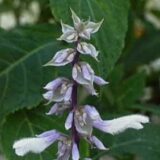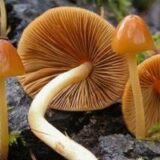What is a Traditional Ayahuasca Ceremony Like?

How is Ayahuasca Used Traditionally?
Today, many people have heard of ayahuasca. Traditionally, however, it was known mostly by cultures of the Amazon jungle as a sole cleanser, spiritual journey hallucinogen, and for a variety of medicinal purposes. Ayahuasca has been used by natives of the Amazon for thousands of years. It is considered essential sacrament of many religious tribes of the area. It is used in shamanistic trance inducing ceremonies throughout the Amazon. Sometimes it is called the “mother of all plants” due to the fact it has long been thought to give shaman the ability to communicate with plants. Plants in the Amazon are thought to be teachers, not just medicines. They are also assumed to have spirits, and be capable of producing special connections between the heavens and earth.
Some shaman believe ayahuasca can create telepathic experiences, energies, feelings and thoughts which can be shared between members of a tribe or ceremony. One of its active ingredients was even named “telepathine,” after the folklore. Ayahuasca has the ability to enhance and improve one’s own ego, as well as the loyalty and camaraderie of the tribe. It brings about a great deal of empathy for others. Regardless of its very many spiritual uses, ayahuasca has still mostly been known for its medicinal properties. The drink has even been used as attempts to diagnose and find cures for many different illnesses.
There are also churches which have been founded, and even still exist today, with ayahuasca at the center of their focus and faith. Ayahuasca is typically the main sacrament of these churches, and it is optionally administered to the members. These churches are usually Christian and faith and located in Brazil. Although the rituals of these churches are typically much different than the ancient ayahuasca ceremonies, they are still intricate and offer their members incredible personal insight and self-exploration opportunity, as well as similar cleansing effects to its original employment.
So, how is ayahuasca traditionally used in the Amazon? What is the ayahuasca ceremony actually like? Who can attend in ayahuasca retreat? These are all excellent questions for an ayahuasca beginner, or anyone looking for an ayahuasca experience.
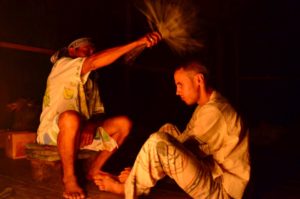 How to Prepare for an Ayahuasca Ceremony
How to Prepare for an Ayahuasca Ceremony
Most people who try ayahuasca for the first time today are both anxious and excited. It is rare for someone to try ayahuasca without having heard many tales of the visions and experiences it has been responsible for. Many people choose to have their first (or all) ayahuasca experience(s) with a guide, or at a traditional ayahuasca retreat. Most guides, or experienced people who help ayahuasca beginners through their journey, suggest preparing for the experience weeks in advance. In fact, many guides have intense preparation requirements which can span more than three weeks prior to an ayahuasca experience. In general this preparation can require following strict diets, meditation routines, and remaining alcohol and drug-free. And the preparation process can involve a lot of self-exploration far before ingesting the drug itself.
Sobriety Before Using Ayahuasca
There is usually a lot of emphasis placed on the preparatory process of an ayahuasca ceremony. Most guides will agree that the fullest effects and benefits of ayahuasca cannot be experienced without the appropriate preparation. Habitual consumers of recreational drugs, including even common indulgences such as tobacco, alcohol, and cannabis, will have severely dampened effects. There are beliefs that if one is unwilling or unable to forgo mind altering substances for a few weeks prior to an ayahuasca experience, that they are unfit and/or unready to receive the experience. Traditional tribal use, and many ayahuasca retreat experiences, consider this mandatory sobriety a psychological test of one’s fortitude and control.
Dietary Recommendations to Improve an Ayahuasca Experience
Besides the elimination of alcohol and drugs from the system weeks in advance, there are other dietary recommendations which are typically given to potential ayahuasca participants. It is very important that no fermented foods or drinks are consumed for at least three weeks in advance. It is also suggested to avoid acidic or citric foods and juices. Overly right foods fit into this category of things to avoid as well. This is especially true within the last three days before the ayahuasca ceremony. Avoiding these foods also divergence from a hypertensive crisis due to having too much tryptamine.
Additionally, all refrigerated foods should be avoided. This includes milk, cheese, yogurt, eggs, cream, sauce, butter, and more. Typically, this advice is given to help tune the body, mind, and soul to using only organic, unprocessed foods, which do not require electricity to maintain prior to consumption. It has been suggested that this type of diet restriction is more comparable to what would be found growing naturally in the Amazon, making a spiritual connection between the participant and ayahuasca (a plant of the Amazon jungle). Guides and retreats usually suggest avoiding oily or greasy foods, or anything hard to digest. It is wise to avoid spices. A special attention is given to pork, as it is considered impure and also high in tryptamine, which can create problems with absorbing ayahuasca.
 Abstinence
Abstinence
Among the many things that a potential ayahuasca participant is to give up for weeks prior to an ayahuasca experience is sex. In fact, not only is a participant expected to abstain from sexual activity for up to three weeks (on average) before an ayahuasca ceremony, but it is also expected to continue this abstinence for a short period of time after the experience. Usually this is considered more of a spiritual and psychological preparation and reflection, rather than for any chemical or physical reasons. It is also extremely ill advised for an ayahuasca participant to have any type of romantic or intimate relationship with their guide or shaman.
Mentally Preparing for Ayahuasca
Ayahuasca guides and retreats are correct in preaching the beverage as being one of the most supreme psychedelic and self-exploration experiences available on earth, and they are also correct in adhering to the responsibility of properly preparing ayahuasca ceremony participants. Educating the participants on the possible effects and helping them explore the reasons for their spiritual journey ahead of time, can greatly improve and ayahuasca experience. The participant must feel ready, want to participate, and understand the ceremony and effects of Ayahuasca. Ultimately, after a guide feels a participant has reached a certain level of psychological maturity, that participant becomes ready for the ceremony.
Rescheduling When Necessary
In ayahuasca experience can always be delayed, or postponed in the event a participant is not ready. Pressuring a participant to partake in an ayahuasca retreat or experience when they are not ready can result in a negative experience. This negative experience may be because the participant was unwilling to give up drugs or alcohol ahead of time (and cleansing the body of as many toxins as possible), or it may have been from a negative or unfit mindset.
About the Ayahuasca Ceremony
Ayahuasca has been consumed for thousands of years by many tribes, religions, and shaman of varying belief systems and worldviews. The ayahuasca ceremony originated in the Amazon, where the drink is native, however, most countries around the world now have their versions of the ceremony. There are tribes, religions, and retreats on every continent in such plentiful quantities, that nearly anyone can experience a traditional ayahuasca preparation, or at least an impressively similar analog. This this is generally even true in countries where the drink or its precursors are illegal. This is because many times religious exemptions are made and these religious sects typically offer outsiders the opportunity to partake in their ceremonies. There may be a variety of differences between tribal ayahuasca ceremonies around the world, however, there are still some similarities which are almost always present whether the ayahuasca ceremony is completely traditional or more modern in practice.
Time of the Day
Although it is true that every ayahuasca ceremony may differ, especially from tribe to tribe, shaman to shaman, and person-to-person, most of them seem to take place at night. The darker the experience, the better. In fact, some retreats, guides, and shaman alike, will not even drink ayahuasca on a full moon because the more intense moonlight can interfere with the experience (namely the visions). Another important detail which seems to be shared in nearly every ayahuasca ritual, is that participants are encouraged to partake in the ceremony on an empty stomach. Some people even fast overnight and throughout the entire day prior to an ayahuasca ceremony.
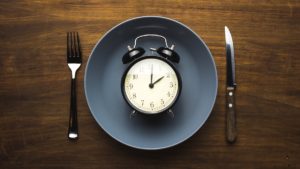 Fasting Before the Ceremony
Fasting Before the Ceremony
Similarly to the darkness, there is an extremity to this which most tribes and retreats take very seriously. In other words, the emptier the stomach, the more enriching the experience and the better the cleansing properties will be. Most ayahuasca retreats will not even serve a meal the afternoon/evening of the ceremony. Exceptions are sometimes made for people who have low blood sugar, or similar difficulties requiring special food intake. There are also people who require special medications which some guides and shaman may consider okay to use with ayahuasca, but these medicines can still require light meals. Even in cases where light meals are consumed ahead of time for special exceptions, the type of meal is important, as as previously mentioned some foods can completely destroy the hallucinogenic compounds in ayahuasca before they are even absorbed by the body, ultimately ruining the experience altogether. Most ayahuasca retreats provide the meals for the participants, vastly reducing the risk of consuming something which will contradict the experience.
How Do Ayahuasca Ceremonies Handle Vomiting?
The way a tribe or retreat chooses to experience ayahuasca and employ it for participating members of the ceremony, can vary in so many ways from tribe to tribe. There is almost always, however, a “puke bucket” provided for each participant. If a bucket is not provided for vomiting, there are always most certainly instructions prepared for handling vomit. This is because vomiting is a regularly accepted side effect, and happens in most participants of an ayahuasca ceremony, especially amateurs and first-time drinkers. Toilets are usually nearby as well, as the drink can cause uncontrollable bowel movements, spitting, etc..
Seating and Posture During the Ceremony
All persons are different, this is especially true when it comes to mental and physical state while on mind altering substances. As far as DMT and ayahuasca go, most people have a natural tendency to want to lay down while experiencing the trip. At an ayahuasca ceremony, this is no different. While many people feel slouching and laying will reduce the negative effects they may feel at various times in the ayahuasca experience, the truth is that laying maximizes the flow in the body and can actually amplify the experience. Still, many shaman and ceremony guides will encourage laying and fully accepting all parts of the experience. Many people choose to lay or sit in a ceremonial type of fashion, almost a sort of “formal stance.” Although most ceremonies do not require any particular positions, a participant’s ayahuasca guide can usually explain some of the traditional seating and laying positions.
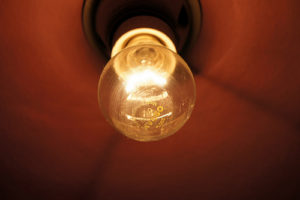 Eliminating Artificial Light
Eliminating Artificial Light
In addition to using ayahuasca at night and avoiding bright moonlight, artificial light is also frowned upon. While some ayahuasca retreats may provide special flashlights or other light sources, most shaman and guide this will agree that light can be devastating to an ayahuasca experience. Some will go as far as to explain that even a lighter or small candlelight can sometimes create intense and chaotic distractions. No cell phones or electronics are permitted to be used during the ceremony. In fact, most people do not even bring electronics to the retreat at all.
No Interaction Between Participants
Ayahuasca ceremonies may involve many people, however, the participants of the ceremony are normally instructed not to communicate with one another. This means not speaking to one another, as well as avoiding hand signals. This rule is usually persistent throughout the entire ceremony. Ayahuasca ceremonies pair guides (people not drinking ayahuasca) with participants (people drinking ayahuasca). If a participant needs to communicate with someone, that person would be their guide. This independent experience is intentional, as ayahuasca is an extremely spiritual drink and each participant is encouraged (and deserves) to focus on themselves during the ceremony.
Ayahuasca has a way of bringing out some deep-seated issues which may normally go completely unrecognized (or could be very well known to the participant, but the behavior amplified). Two really common examples of this include a participant wanting to help someone else (such as another participant), or a participant needing comfort (suggested to be a sign of co-dependence issues). If a participant has any behavioral anomalies, they are normally acknowledged by the guide, as the participants focus is redirected on themselves and their inner experience.
Self Exploration: Anxieties and Drama
Ayahuasca is a truth seeking experience. The drink creates the knowledge, wisdom, and encourage necessary to investigate the excuses participants make up for themselves in their lives. The drink helps participants find themselves, and understand the lies in their lives. Many guides explain that a participant’s true pain and suffering have the potential to come out during an ayahuasca ceremony. Some participants go through insane crying fits, and even outrageous screaming tantrums. Inexperienced and training guides can sometimes grow worried, however, experienced guides and shaman are quick to explain that these exaggerated emotions are part of the ayahuasca’s cleansing process. Usually, unless there is self-harm or another threat present (quite rare on ayahuasca at a controlled retreat), the participant is left alone and as little help is provided as possible. This is because it is considered imperative that a participant works through their own inner fight.
The entire purpose of ayahuasca, traditionally and spiritually, is to cleanse the mind, body, and soul. This healing process is not always fun, but sometimes the experience of venting pain and suffering, sadness and grief, anger and regret, and other emotions through ayahuasca is exactly what a person needs to move on with their life. Ayahuasca is considered a medicine for so many reasons, but the ability for it to aid in a transformative self-exploration experience such as those experiences found at ayahuasca retreats, is undoubtedly the drinks most powerful contribution to the world.
Embrace the Fear
Some ayahuasca participants experience terrifying fear at various points of their trip. The most experienced and skilled guides typically those participants embrace this fear rather than run from it. They explain that the fear is being manifested by the ayahuasca drink for a reason and that it needs to be understood. The fear and anxiety the drink brings about are typically from deep-seated issues in one’s life, and these issues need to be addressed, accepted, and eliminated. A good ayahuasca guide will not tell someone words of comfort in a time of fear, but instead will arm them with the knowledge, perspective, and moral support necessary to confront and conquer this fear. Most ayahuasca participants (if not nearly all of them) come out of the experience feeling rejuvenated, stronger, motivated, better understanding themselves, and feeling as though they are ready to conquer their lives.
Interesting Note: Some ayahuasca drinkers may panic, exclaiming that they are having trouble breathing. This panic is explained by many guides to be mental, as ayahuasca is not a respiratory depressant, and in traditional preparation makes no change to one’s breathing.
 Tobacco Blessings & Fragrances Used During Ayahuasca Ceremonies
Tobacco Blessings & Fragrances Used During Ayahuasca Ceremonies
Depending upon the religious beliefs and traditional practices of the ayahuasca retreat or tribe offering ayahuasca ceremonies, a variety of blessings, perfumes, and other substances may be introduced throughout the ceremony. In addition to being administered before ayahuasca is drank, tobacco is frequently used throughout an ayahuasca ceremony as well. It is normally not smoked by a participant, however shaman and guides may use tobacco by blowing it around the participants and throughout the ceremony location. This is to bless the space of the ceremony and to bless the ayahuasca itself. Sometimes the tobacco blessings are accompanied by song or prayer.
Actually Drinking Ayahuasca
The drink itself does not taste very good, in fact, it is well known to be a very bitter and foul tasting drink. Most shaman and guides suggest consuming the beverage as quickly as possible. Like a strong spirit, it is also suggested not to breathe any of the ayahuasca drink in through the nose, as this can make one extremely nauseous and can induce vomiting before the drink has even begun absorbing to the body. Tribes, guides, and science itself seem to concur that the ayahuasca must remain in the stomach for about 15 minutes (at least) for it to be absorbed enough to be effective. If an hour has gone by and a participant is unsure whether or not they feel the effects, or whether or not they have had enough of the drink, a guide usually suggests consuming more of the beverage.
Using Encantos with Ayahuasca
Encantos are special types of healing stones and crystals. They are very common among shaman throughout Peru and within tribes of the Amazon. Encantos are very commonly found in ayahuasca ceremonies, as they are a rarer type of healing stone and thus are valued in a sacred sense much like ayahuasca itself. These stones are placed on parts of a participants body while they lay resting, and enjoying soft music and rhythms. Although they are not present in every ayahuasca ritual (and are even more rarely used today), those participants who have experienced of them have exclaimed the ceremony as much more powerfully cleansing.
Final Words About Attending an Ayahuasca Ceremony
No one knows what an ayahuasca ceremony will manifest for their experience ahead of time. All the research in the world can be done, all expert advice can be read and followed, adequate time can be spent with one’s guide, past experiences can be explored, and one can hypothesize as much as they would like, however, all ayahuasca experiences are different. This is even true for the same person with each experience they might have. There may be strong similarities between experiences, especially for the same person using the same guide and drink preparation, however, still no experiences is exactly the same. Instead of trying to predict what an ayahuasca ceremony may provide for any particular participant, it is much better for a participant to go into each ayahuasca experience with only positive, relaxed, and open-minded energy to encourage the best experience. A good ayahuasca guide will always help a participant prepare best they can to encourage the best experience possible.
Disclaimer: Botanical Shaman does not condone the use of illegal drugs, and cannot be responsible for any spiritual journeys anyone experiences.



